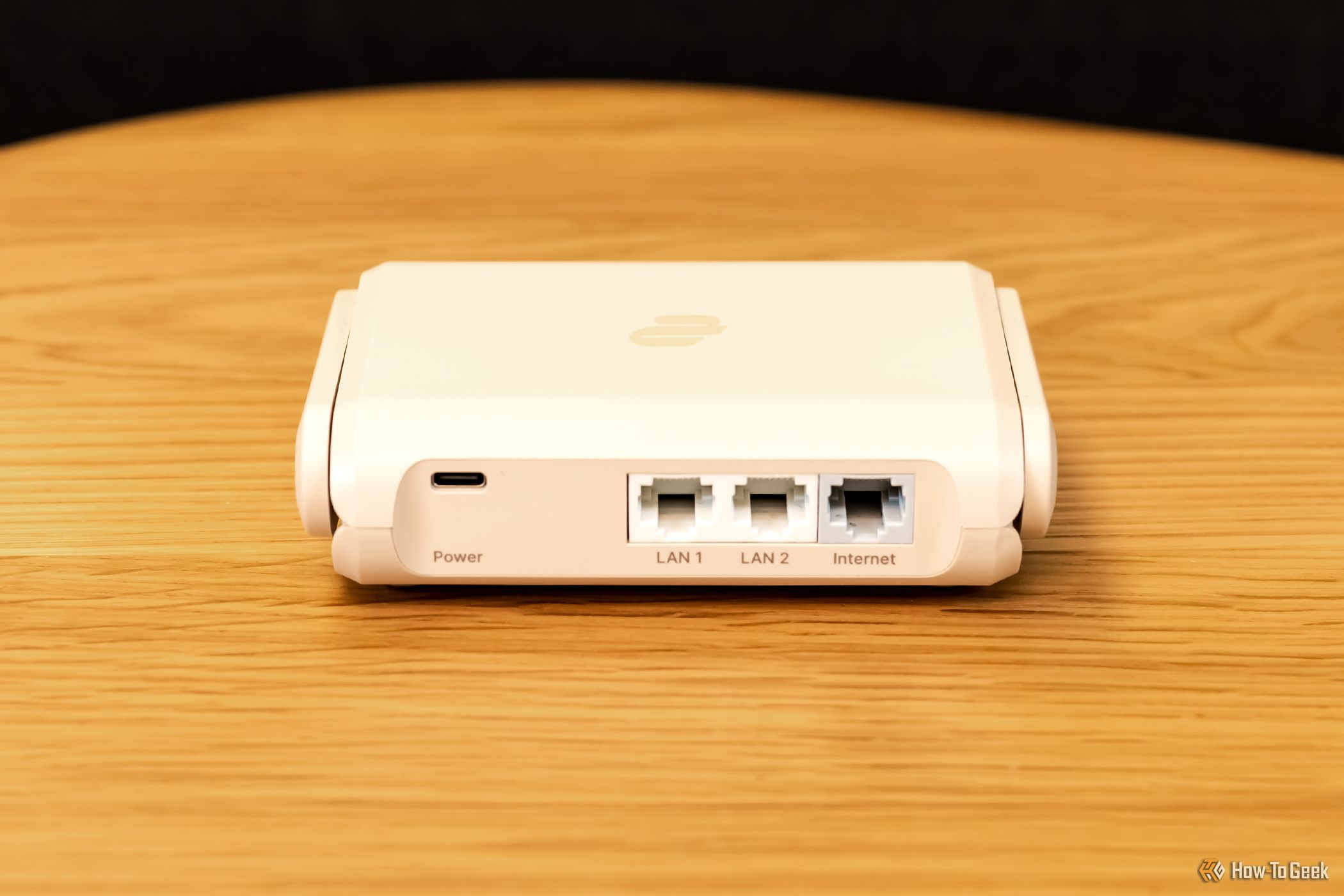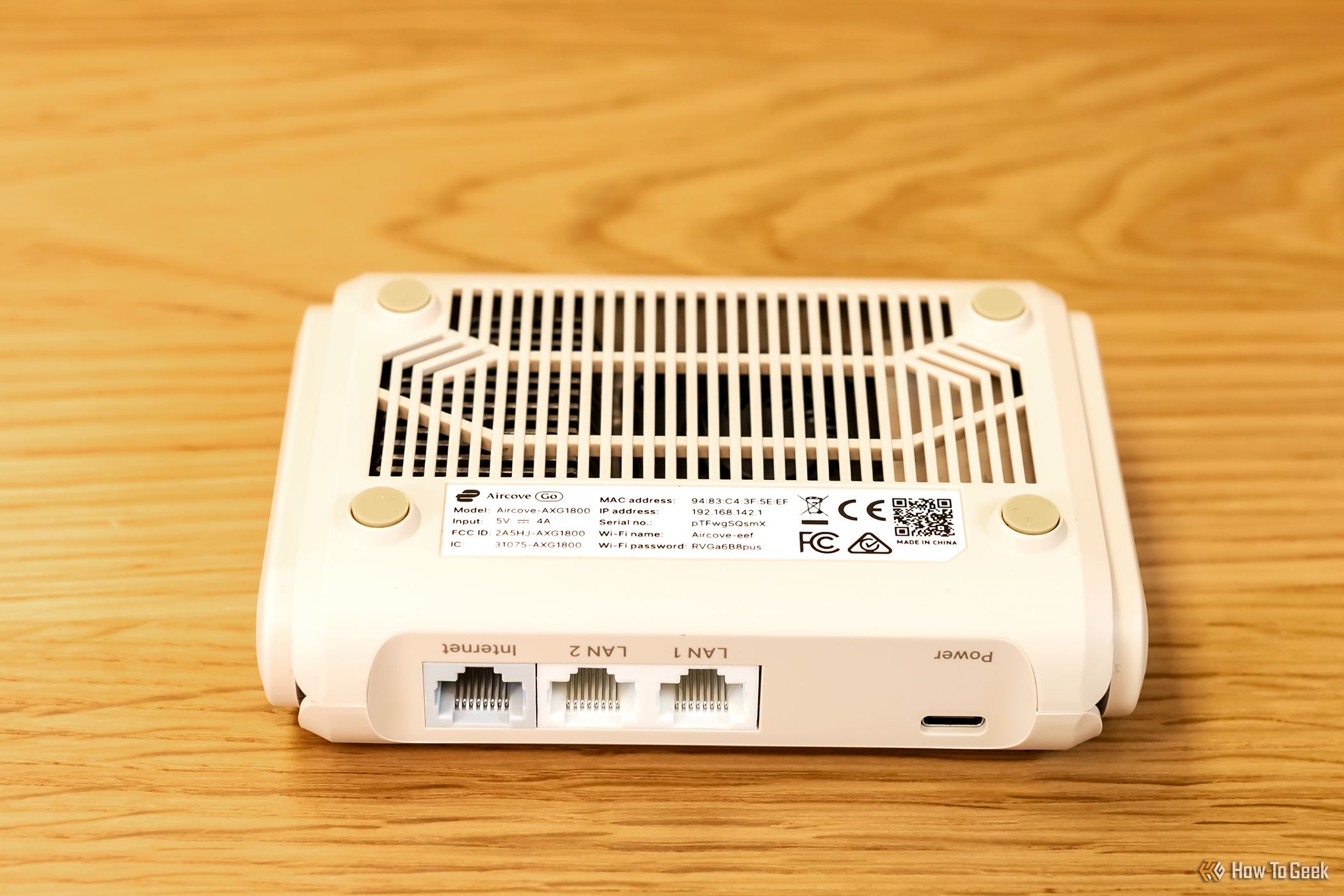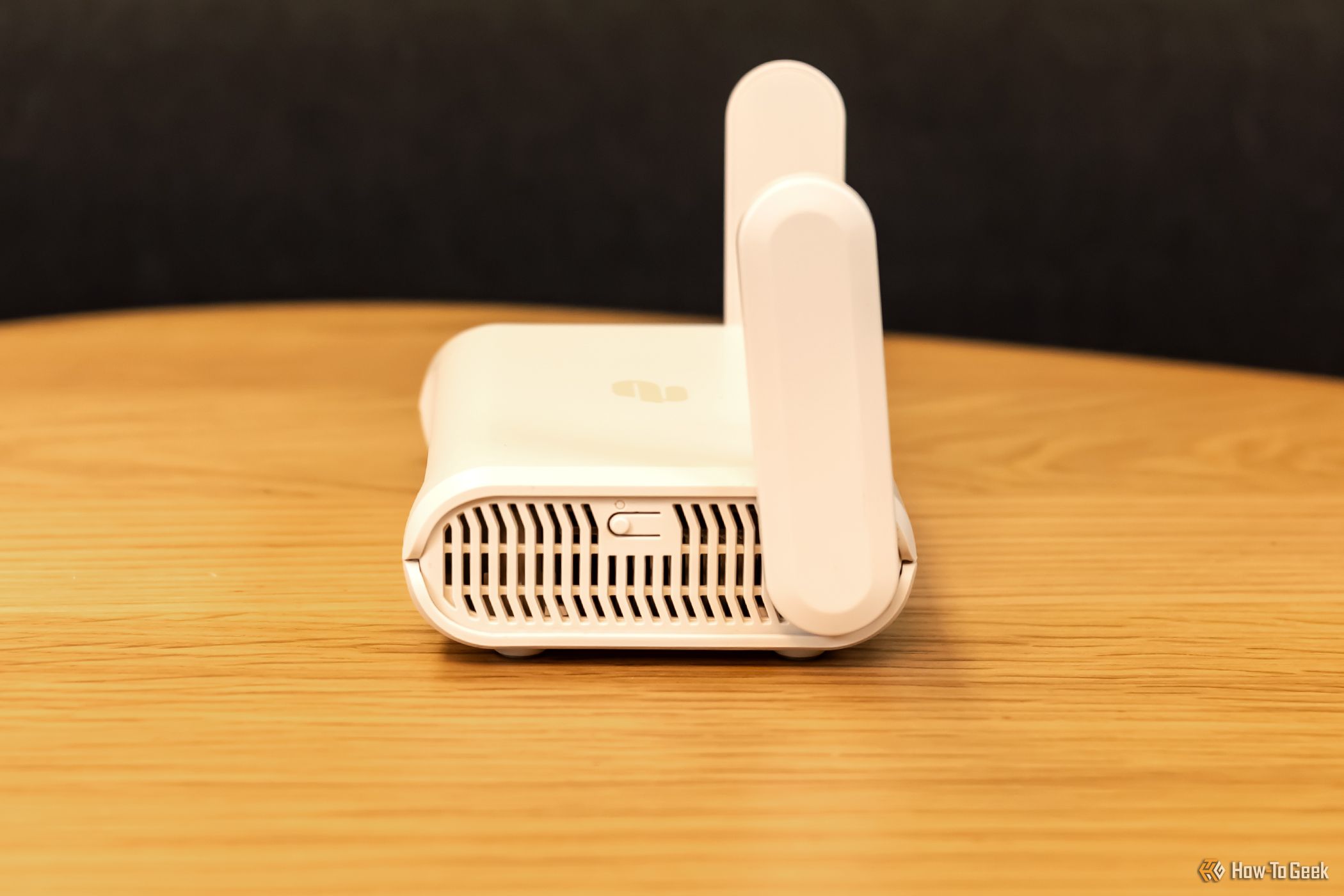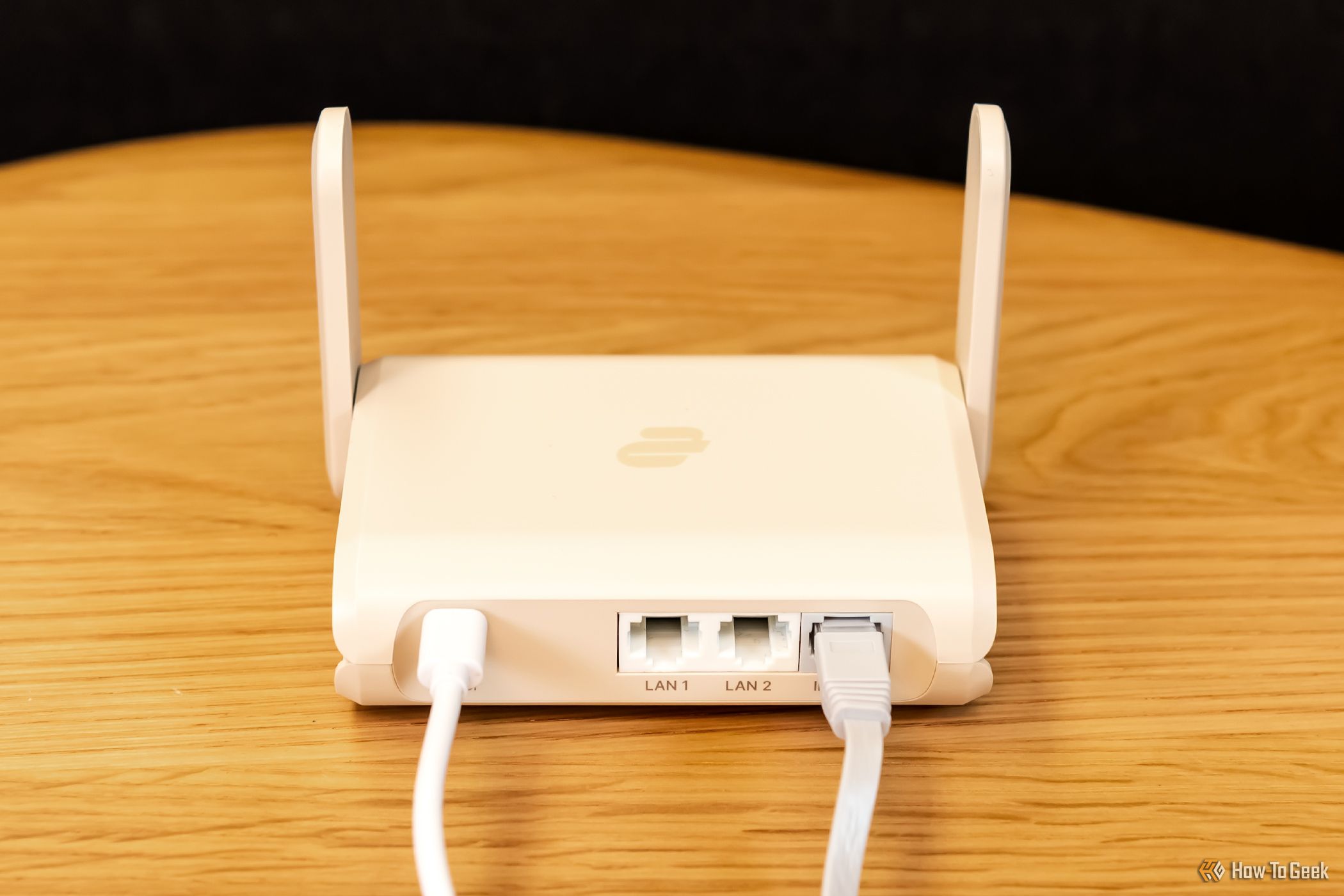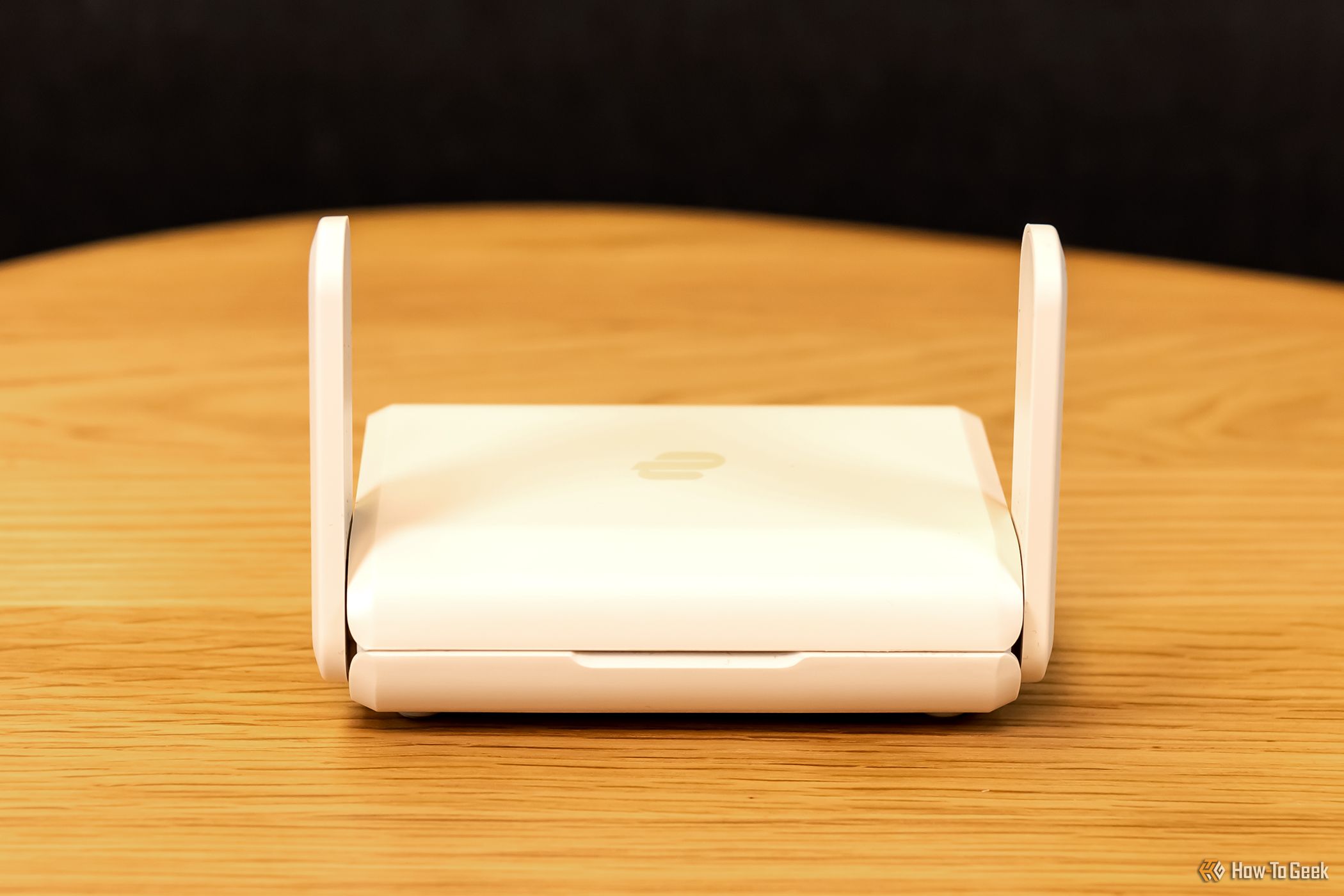Key Takeaways
- Aircove Go by ExpressVPN offers a portable VPN router, with impressive network performance.
- Setup may require patience and an initial ethernet connection for the Wi-Fi link feature.
- Aircove Go provides solid Wi-Fi, and customizable settings, but the VPN connection might be inconsistent.
If you’ve been looking for a great VPN router that offers fast connectivity, excellent web protection, and intuitive controls, look no further than the ExpressVPN Aircove Go. Other than its ethernet-only, out-of-the-box setup, there wasn’t anything I disliked about this terrific device that helps keep your internet traffic invisible on the road.
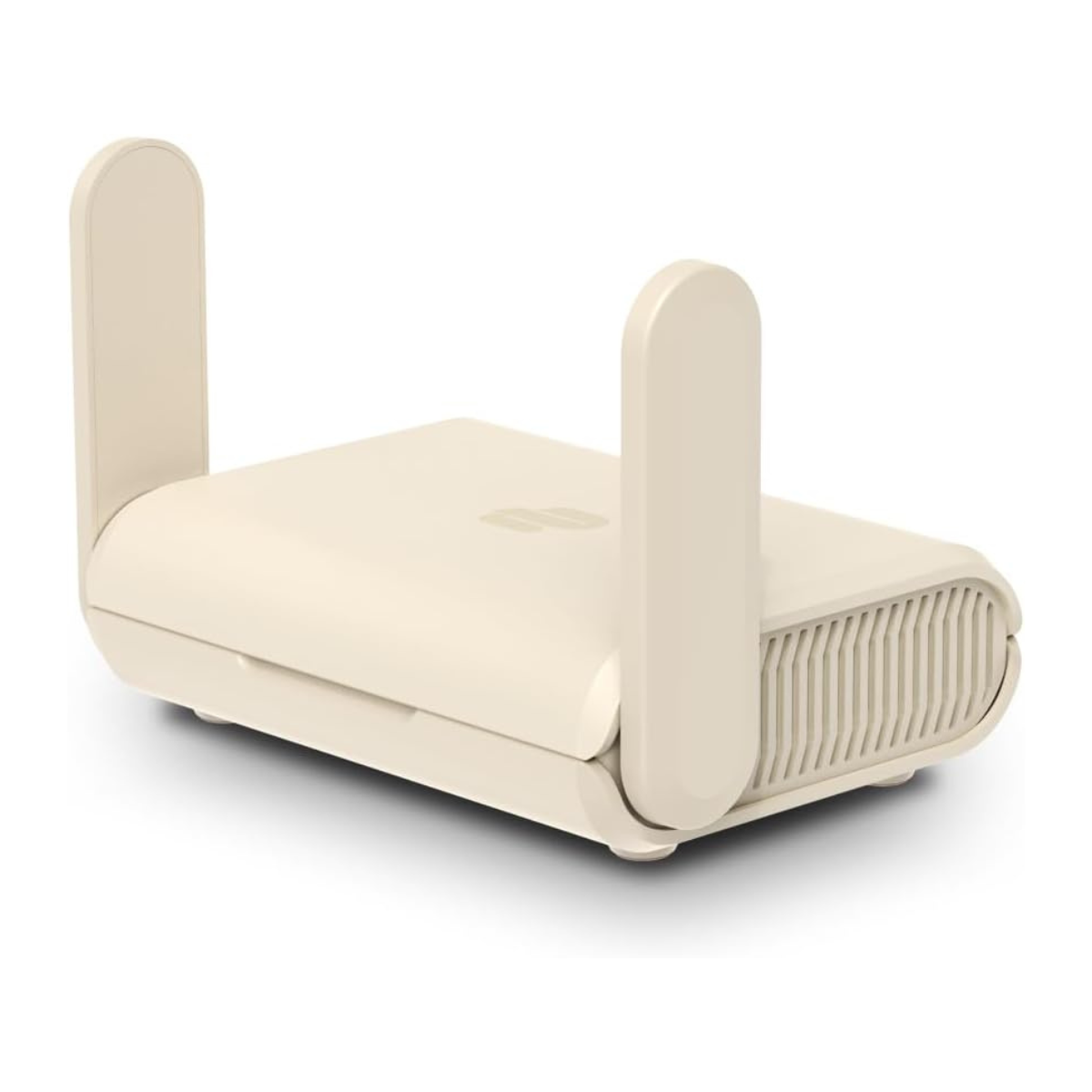

ExpressVPN Aircove Go Wi-Fi 6 Router
Exclusively developed by ExpressVPN, Aircove Go is a portable Wi-Fi 6 router with built-in VPN (when used with an active ExpressVPN subscription, sold separately). So in every new hotel room, holiday rental, or co-working space, you’ll enjoy the performance and stability you’re used to having at home.
- Delivers impressive network performance
- Portable and lightweight
- Great settings dashboard with numerous security features
- Wi-Fi performance can be inconsistent
- Some instructions could have been clearer
Price and Availability
The ExpressVPN Aircove Go sells for $170 and is currently available on Amazon and ExpressVPN. If this is your first time using an ExpressVPN product, you’ll receive the first month of ExpressVPN’s IP protection for free. Once this trial period ends, you’ll have the option of paying $13 per month, $10 per month for a six-month subscription, or $9 per month for a yearly subscription.
Small Enough to Fit in Most Bags, Pockets, and Sleeves
The Aircove Go is about the same size as a USB hub or portable travel charger. Two foldout antennas are located on each side of the device. You’ll want to have these pointing straight up for the best wireless signal. An LED indicator hangs out on the front of the Aircove Go, using solid and blinking lights to communicate the current network connection. The back of the router is where you’ll find two LAN ports, an ethernet hookup, and power.
I was pleased to see a good amount of venting, with grilles on both the sides and bottom of the Aircove Go. Four small furniture pads prevent the unit from sliding around counters and tables, while keeping your furniture scratch and scuff-free. There’s also a small reset button on the right side of the Aircove Go.
Additional box contents include a handful of international power adapters (US, UK, European, and Australian), a small ethernet cable, and a travel pouch.
Be Patient During Setup
Getting the Aircove Go up and running was relatively straightforward, but make sure you’ve got plenty of time to play with when you first unbox and attempt to activate it. You’ll also need to have access to an ISP modem or router, as the Aircove Go’s initial setup requires an ethernet connection. I plugged my test unit directly into my everyday Wi-Fi router and needed to wait a few minutes for the Aircove Go to register the hookup. You’ll then need to head to expressvpnrouter.com to create an account and admin password. You’ll also need to install the latest firmware, at which point you’ll finally gain access to the Aircove’s settings dashboard.
One of the Aircove Go’s best capabilities is the ability to hop onto an existing Wi-Fi network. I do wish ExpressVPN were a bit more forward with its instructions though. I had to look up a couple of articles to learn that I needed to first connect the Aircove Go via ethernet to turn on the Wi-Fi Link feature.
My sub-label for this section mentions patience: Whenever I connected a new device to the wireless Aircove Go network, I’d have to wait a minute or two for the internet to actually start working. But once the first webpage loaded up, everything was smooth sailing. This even happened when I had the Aircove Go connected with ethernet.
Safe Networking at Home or on the Go
The Aircove Go is a Wi-Fi 6 router that supports up to 750 square feet of broadcast coverage. With ideal network conditions in play, ExpressVPN claims you’ll get up to 600Mbps from a 2.4GHz network and up to 1,200Mbps for 5GHz bands. While I didn’t experience anything close to this level of performance, the Aircove Go brought some solid Wi-Fi nonetheless.
First and foremost, I tested things out with my apartment’s Wi-Fi. This was the router I used to initially configure the Aircove Go via ethernet. After activation, I unplugged the hardwired connection and switched the Aircove Go over to Wi-Fi. I decided to leave the device’s default network name (“Aircove-eef” in my case) as it was and attempted to connect my iPhone 12 to the Aircove Go network. This was as simple as choosing the Aircove network in my phone’s Wi-Fi settings, launching a browser, and entering my ExpressVPN admin password.
It took a few moments for things to stabilize. While I was able to start using Wi-Fi right away, the first couple of minutes were a bit wonky. When I went into the Aircove Go settings, the dashboard would show that the router wasn’t connected to the internet, but after about 10 or 15 seconds, everything was solid. Once I felt like everything was working as it should, I went ahead and connected my MacBook Pro and PlayStation 4 to the Aircove Go.
Browsers and apps loaded without issue, albeit a tad bit slower than what I was used to from my regular Wi-Fi network. I ran a few speed tests and got back some decent numbers when connected to 2.4GHz: 55Mbps download + 34Mbps upload for my iPhone, 50Mbps download, and 25Mbps for my MacBook. The PlayStation 4 only managed 19Mbps for download and 12Mbps for upload, and I had the console connected to one of the Aircove Go’s LAN ports. Strange.
Readings improved for my iPhone when I switched to 5GHz, with speeds soaring to 122Mbps download + 52Mbps upload. Curiously though, my MacBook (located in the same room at the time) still hung around 50Mbps download + 25Mbps upload. That was until I decided to connect the Aircove Go directly to my router. Beforehand, I just had the unit plugged in for power. With ethernet aiding the handshake between the Aircove Go and my router, I was able to achieve up to 120Mbps over 5GHz on my MacBook. Word to the wise: Plug the Aircove Go into a modem or router whenever you can.
I took public Wi-Fi for a spin by walking down to my apartment community’s main office building. After plugging in the Aircove Go, I just needed to change over to the new Wi-Fi in the settings dashboard. Once the connection stabilized, I ran a speed test on my iPhone and got back 134Mbps download + 110Mbps upload. Now I know where to come hang out when I need to upload massive files to Google Drive!
One more observation here: the VPN dropped out a couple of times. I’m not sure why, and this happened both on my home Wi-Fi and on public Wi-Fi. I also didn’t get a notification when this occurred. The only reason I knew was because I had the settings dashboard opened at the time. A “disconnected VPN” message appeared at the top of the page, joined by a 5-minute countdown. When the timer runs out, the Aircove Go attempts to relaunch the VPN.
A Bevy of Settings and Customizations
I managed my Aircove Go settings using both the mobile-optimized and desktop browser versions of the settings dashboard (both located at expressvpnrouter.com). Other than a couple of cosmetic differences, these menus looked and functioned the same. One cool thing was when you’re using the dashboard on mobile devices, ExpressVPN will ask if you’d like to create a Home Screen widget, which I totally did.
The dashboard has a lot of settings and customizations, and most of them are very useful. At launch, you’ll see what network the Aircove Go is connected to, along with what devices are online. One of my favorite features of the Aircove Go is the ability to create up to five VPN groups. This is especially convenient if you frequent a lot of the same locations. You’ll be able to customize networking and VPN settings for each group. You can even add parental rules to prevent youngsters from stumbling onto non-kid-friendly content.
Under “Advanced Settings,” you’ll be able to set up port forwarding, create backups of your Aircove Go’s configurations, search for software updates, and more. I also really liked the “Share Wi-Fi Access” button, which generates a QR code that anyone can scan to automatically join your protected Aircove Go network.
Should You Buy the ExpressVPN Aircove Go?
I enjoyed my time with the ExpressVPN Aircove Go, and save for a few networking and VPN hiccups (most of which presented over Wi-Fi), I could see this portable router being a staple for those who need to travel a lot. Once you get past the initial setup process, the Aircove Go is easy to use and gives you a ton of customization options for fine-tuning your VPN experience. Do remember that after your first month of VPN service, you’ll need to pay for a monthly or yearly ExpressVPN subscription though.


ExpressVPN Aircove Go Wi-Fi 6 Router
Exclusively developed by ExpressVPN, Aircove Go is a portable Wi-Fi 6 router with built-in VPN (when used with an active ExpressVPN subscription, sold separately). So in every new hotel room, holiday rental, or co-working space, you’ll enjoy the performance and stability you’re used to having at home.


